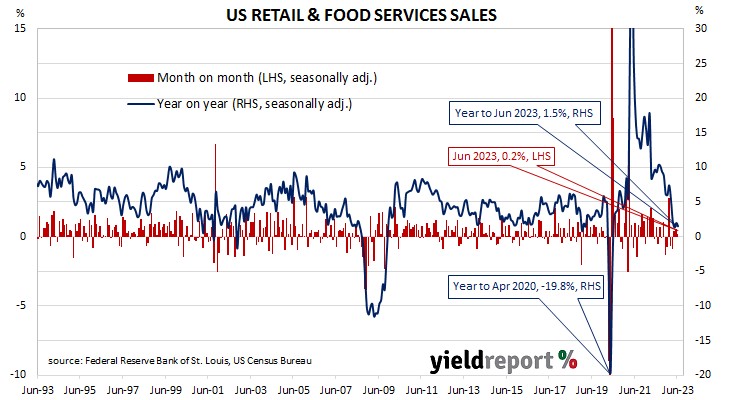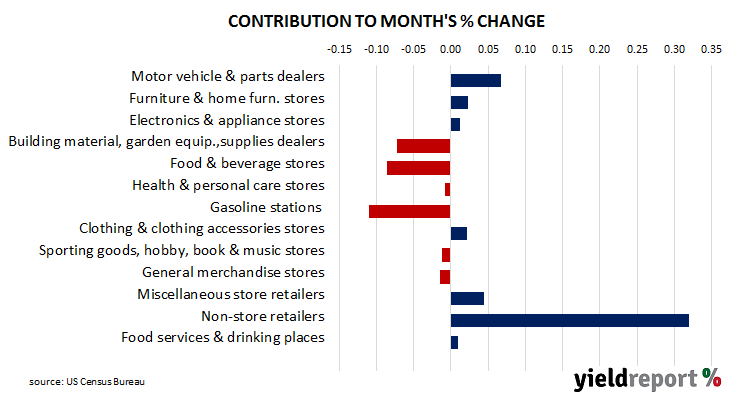Summary: US retail sales up 0.2% in June, less than expected; annual growth rate slows to 1.5%; ANZ: excess savings may be starting to run dry; Treasury yields rise at short end, fall elsewhere; rate-cut expectations soften; ANZ: spending being reined in; higher sales in seven of thirteen retail categories; online segment largest single influence on month’s result.
US retail sales had been trending up since late 2015 but, commencing in late 2018, a series of weak or negative monthly results led to a drop-off in the annual growth rate below 2.0%. Growth rates then increased in trend terms through 2019 and into early 2020 until pandemic restrictions sent it into negative territory. A “v-shaped” recovery then took place which was followed by some short-term spikes as federal stimulus payments hit US households in the first and second quarters of 2021.
According to the latest “advance” numbers released by the US Census Bureau, total retail sales increased by 0.2% in June. The result was less than the 0.5% increase which had been generally expected as well as May 0.5% rise after it was revised up from 0.3%. On an annual basis, the growth rate slowed from May’s revised rate of 2.0% to 1.5%.
ANZ economist Kishti Sen said the increase “…was not as large as the markets were expecting, indicating excess savings may be starting to run dry.”
The figures came out the same morning as the latest industrial production figures and shorter-term US Treasury bond yields increased while longer-terms yields declined. By the close of business, the 2-year Treasury yield had added 2bps to 4.76%, the 10-year yield had lost 2bps to 3.79% while the 30-year yield finished 3bps lower at 3.90%.
In terms of US Fed policy, expectations of a lower federal funds rate in the first half of 2024 softened slightly. At the close of business, contracts implied the effective federal funds rate would average 5.12% in July, 4bps more than the current spot rate, and then increase to an average of 5.315% in August. December futures contracts implied a 5.37% average effective federal funds rate while June 2024 contracts implied 4.75%, 33bps less than the current rate.
“Sales excluding auto and gas lifted 0.3%” added Sen. “These data underscore consumer resilience although we are starting to see spending being reined in a tad.”
Seven of the thirteen categories recorded higher sales over the month. The “Non-store retailers” segment provided the largest single influence on the overall result, rising by 1.9% over the month and contributing 0.32 percentage points to the total.
The non-store segment includes vending machine sales, door-to-door sales and mail-order sales but nowadays this segment has become dominated by online sales. It now accounts for over 16% of all US retail sales and it is the second-largest segment after vehicles and parts.



